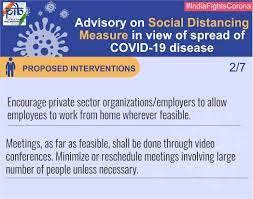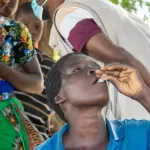Any new HIV prevention method is not meant to sit on the shelf but to be used by the people who need it to protect themselves from HIV. We have to ensure that new HIV prevention technologies that are coming out of the scientific research pipelines, are accessible to people everywhere – especially those who are more at risk of HIV acquisition. Jim Pickett has passionately called for translating scientific gains into public health outcomes – not with delay, but with equity and justice.
Currently Jim Pickett serves as a Senior Advisor for AVAC and directs their Choice Agenda programme focussed on HIV prevention research and its implementation.
Inconvenient truth
When asked what has changed between 2018 and now, he said: “COVID-19 reshaped our entire world. Traumatizing as it was, it also changed some things for the better, I think, globally. We got better at finding new ways to deliver healthcare. We also learned that we could develop a vaccine quickly and that was a win. But we failed to deliver it equitably in many parts of the world.” Jim was speaking with CNS at the 5th HIV Research for Prevention Conference of the International AIDS Society (IAS) in Lima, Peru.
Sadly, equity and justice are not driving our health responses. “We have had some exciting scientific developments in the HIV prevention space. We have cabotegravir- a once-in-two months injection that can prevent HIV. But accessibility is a different issue. It is available in our country, but it is extremely expensive. It is also complex to deliver. So the number of users is very low. It is available, but not accessible for many,” he said.
“We now have another long-acting injectable lenacapavir- two shots a year- that is on its way to being approved. And people are calling it game-changing and transformative in terms of HIV prevention. But it remains to be seen what access will look like. Peru, Brazil, Argentina and Brazil are among the countries that have been left out (from the 120 countries list) by Gilead (makers of lenacapavir) to provide it at reduced costs, despite these 4 countries being part of the clinical study of the drug,” he added.
Imagine the injustice: people of countries which participated in the clinical study of lenacapavir for a greater common good, will not be able to get the best of benefits when it comes to its rollout, as of now.
“I am also excited about the tenofovir-medicated rectal douche as Pre-Exposure Prophylaxis (PrEP) for men who have sex with men- a douche that provides hygiene before anal sex, and then leaves the drug behind that provides protection against HIV. In an early Phase-1 study examining its safety and acceptability, majority of the participants stated that they would prefer the douche over daily oral PrEP,” said Jim.
“If PrEP douche passes through phase-2 and phase-3 studies, and then move to regulatory approvals and get into the market, it would be our first-ever behaviourally congruent intervention, which means harnessing a behaviour that people already do,” he said.
PrEP is a medication for HIV negative people to protect them from getting infected with HIV.
A choice should be accessible
Science finds new tools to create new HIV prevention options for people, but then to have success in terms of making it accessible to all so that we can reduce new HIV infection rate, continues to remain a struggle. “It is like science gets you to the top of one Mount Everest and then we find that there is a second Mount Everest of ‘access’ to climb. And that might even be a taller version of the first Mount Everest,” rightly said Jim.
“While I am really excited for these new choices that we will have, I am also frustrated that they will not be real choices, unless people can truly access them. There is no change in the game if you cannot get on the field, and there is no ‘transforming’ anything if that drug looks really good on paper, and then it sits on a shelf, and the people, who really need it, do not have access to it. It needs to be cheap, affordable, and accessible to everyone anywhere in the world. We definitely need to have some strategy for this,” he added.
We cannot put profit above people’s health
“The focus of pharmaceutical companies is on their shareholders and on making money. But public health is not about profit; it is not about money; it is about rights-based access – for everyone, regardless of their means. So there is a conflict of interest in that relationship. We need people at the negotiating table who want to fix this. So, community involvement from the very beginning is very important. It is about having all hands on deck, I think everyone who is involved- from every community person, organisations, governments, policy makers, funders, pharmaceutical companies, we have to hold them accountable,” rightly said Jim.
Take the example of Lencapavir. “It does not need to be priced over US$ 40,000 per person per year to be profitable. We are not asking pharmaceutical companies to do this for free, but do they deserve rewards that are exponentially beyond profit and just so high that it can bankrupt health systems? Or make health systems say that it is beyond their financial capacity to pay that kind of money? We cannot bankrupt our health system for one innovation when we have multiple health needs for the community. We cannot subsidise products that are so grossly expensive. We do not know how much the price of lencapavir will be decreased through voluntary licensing by the generic manufacturers who are also for-profit companies. So there is a lot to do to make sure that when it moves forward and it gets produced, it is priced in a way that is affordable for the people,” he said.
PrEP approved in 2012 but many high burden nations yet to roll it out in public programmes
There are countries like India where even the oral daily PrEP is not in the government programme even 12 years after it was approved in 2012, forget about the long-acting new PrEP products. It is ironical that HIV treatment is free in India, but HIV prevention options like PrEP are not. “So, in a way you are putting people at risk of getting infected with the virus and then offer them lifelong treatment, but not giving them prevention medication for free. What sort of economy is this? If you have HIV, you get those very drugs (that could have been given to prevent HIV infection in the 1st place),” he said.
Even in richer nations like USA problems and disparities plague the development response. “There are many HIV programmes for people living with HIV around housing, food security and transportation vouchers. And I am happy for that. I am a person living with HIV, and I am happy to see other programmes that help people who need support. But then there are many people who are HIV negative, and who still are struggling- they do not have good housing, do not have a decent job, and are struggling to find their next meal. If we can get someone safely housed, make sure they have a full meal, it would help a lot in HIV prevention too all on its own,” rightly remarks Jim Pickett.
“People who have HIV prevention as their concern have many other concerns as well, and many times those other concerns are more pressing problems for them- like where am I going to sleep tonight? Am I going to get a meal today? When will I get a job? How am I going to continue my education? These are their priorities, which make them more vulnerable to HIV infection,” he added.
Reducing vulnerability of people to HIV requires society-wide structural interventions and political commitment backed with resources. “We are one whole person, and not separated in compartments,” says Jim.
He is right. All health and development enshrined in promises our governments have made are also contributing towards HIV prevention, support and care. We, the people need to connect the dots and call for integrated development responses that are socially just.
Shobha Shukla – CNS











